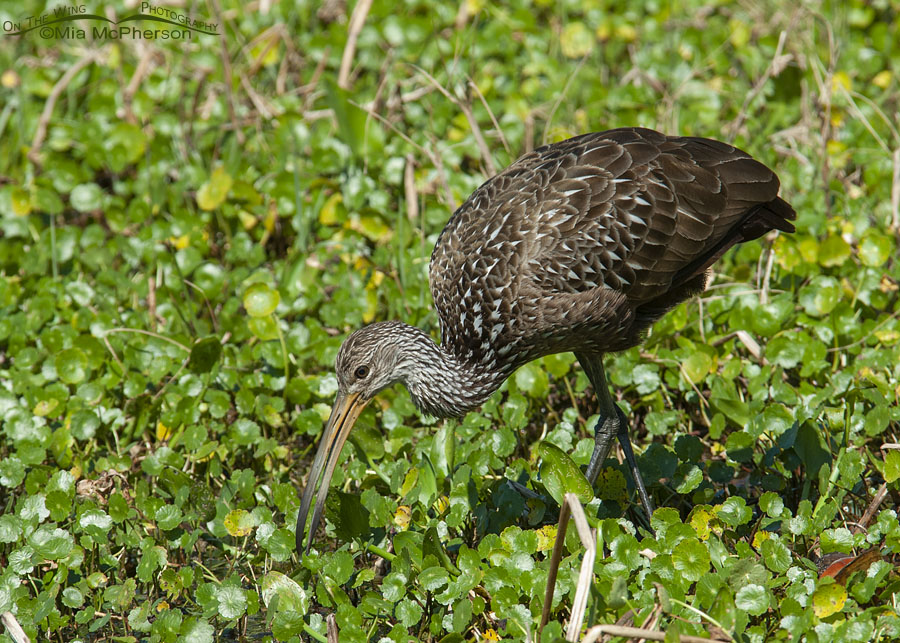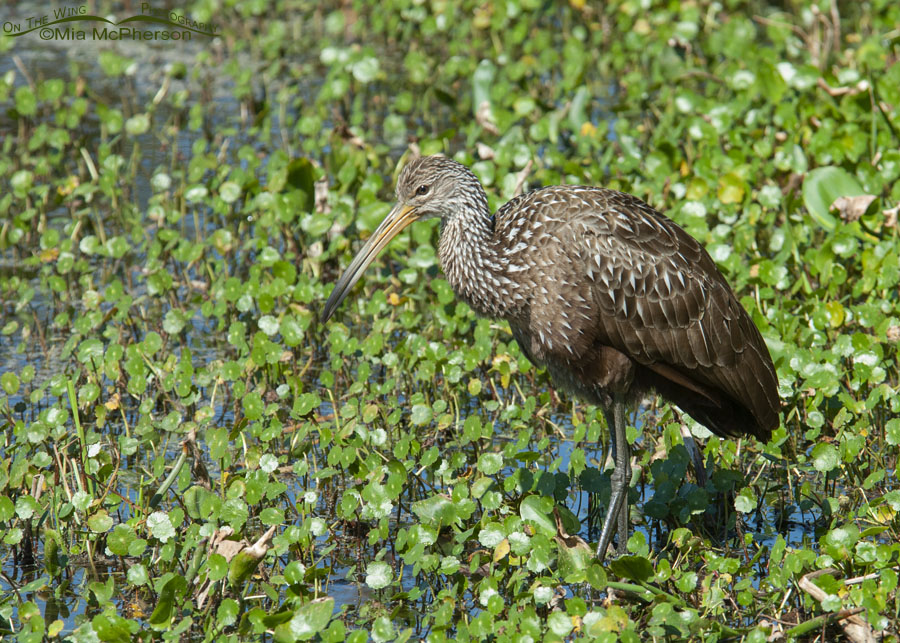Limpkins are the only member of their taxonomic family and although they might resemble wading birds they are more closely related to cranes. Their bill is adapted to eating snails, specifically Apple Snails, but they will also eat frogs, mussels, insects, spiders.
 Limpkin foraging for snails in a wetland area – Nikon D200, handheld, f7.1, 1/500, ISO 200, Nikkor 80-400mm VR at 310mm, natural light
Limpkin foraging for snails in a wetland area – Nikon D200, handheld, f7.1, 1/500, ISO 200, Nikkor 80-400mm VR at 310mm, natural light
Eleven years ago today I was wandering and looking for birds to photograph at Lake Seminole Park in Florida and found a very cooperative Limpkin that was foraging for breakfast. Limpkins can be quite approachable in the Sunshine State where they can be found near freshwater marshes, ponds, lakeshores and swamps as well as man made canals.
Because of wetland destruction Limpkins are listed as a Species of Special Concern and their populations are on the decline.
 Limpkin taking a break from foraging for snails – Nikon D200, handheld, f7.1, 1/320, ISO 200, Nikkor 80-400mm VR at 260mm, natural light
Limpkin taking a break from foraging for snails – Nikon D200, handheld, f7.1, 1/320, ISO 200, Nikkor 80-400mm VR at 260mm, natural light
I watched and photographed as this Limpkin foraged, caught snails, ate them, fluffed its feathers and went on to hunt some more. It was quiet, peaceful, and relaxing to photograph this Limpkin and for a while I just sat on the boardwalk and watched it.
The calls of Limpkins helped me to locate them quite often in Florida, their calls are distinctive and I believe unforgettable.
In hindsight I wish I had spent more time photographing the birds in Florida that lived away from the coast more often than I did but the pesky, biting insects always tore me up badly so me, my camera and my feet spent more time on the coast where the sea breeze kept insects at bay. Most of the time.
Life is good.
Mia
Click here to see more of my Limpkin photos plus facts and information about this species.


It is an interesting call but not sure if I could differentiate it from a gull, unfortunately. More practice in listening is needed and more opportunities to get out in natural settings will help.
Interesting bird, one we don’t have in Utah. I think if I saw it I would think it a juvenile due to it’s coloration.
My heart breaks at just how many birds and animals there are on the special concern lists – and those on the later uglier lists too.
Thank you for this beauty.
Love that second image. Thanks for introducing the Limpkin to me.
On my first visit to Florida this was my single most-wanted bird. When we moved to Florida in 2004 we had Limpkins nesting in a local preserve. We often heard them calling from the parking lot as we got out of the car. We then found Apple Snail eggs affixed to the water plants. Both the snails and the Limpkins vanished in 2014, and I have not heard or seen one there since.
Cool photos Mia.
Thank you for the lovely photos and the wonderful information. The call is unique and I treasure all that you do.
Lovely. Used to see them at Wakulla Springs on the “Jungle Boat Ride” when I was a student at FSU. A rare treat!